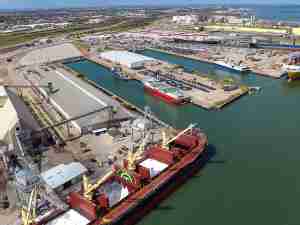“We look forward to utilizing this agreement as a way to generate new cargo opportunities and to share best practices with the Port of Tallinn,” said MPA Deputy Executive Director Broadwater. “Tallinn is the largest port in Estonia and their business profile includes some of the same focuses as ours—containers, roll on/roll off, and cruise. We look forward to the partnership.”
Under the MOU, the MPA and Port of Tallinn may elect to undertake joint marketing efforts to generate new shipping business, share data that may be helpful in forecasting future trade flows, and exchange information on training programs.
“We are looking forward to developing mutually beneficial business opportunities as part of the newly signed agreement,” said Port of Tallinn CEO Kaljurand. “Strategic partnerships are very important to us and we see the opportunities for further cooperation with Port of Baltimore. First of all, promoting the existing ship line which links the Port of Tallinn’s Paldiski Southern Harbor with Port of Baltimore and providing roll on/roll off container and project goods shipping service. Secondly, Estonia and the Port of Tallinn’s harbors are the ideal location and a potential gateway for American producers and logistics services providers whose target market is the Russian Federation, CIS countries and the Baltic Sea region.“
The MPA has similar agreements with other international ports including Adani Ports (India); Nagoya (Japan); Gdynia (Poland); Genoa (Italy); Sokhna (Egypt); and Cotonou (Africa).
General cargo in 2012 at the Port of Baltimore’s public marine terminals was up 10 percent through September over the same time period last year. Among individual commodities, roll on/roll off was up 26 percent, autos were up 22 percent, and containers were up seven percent.










